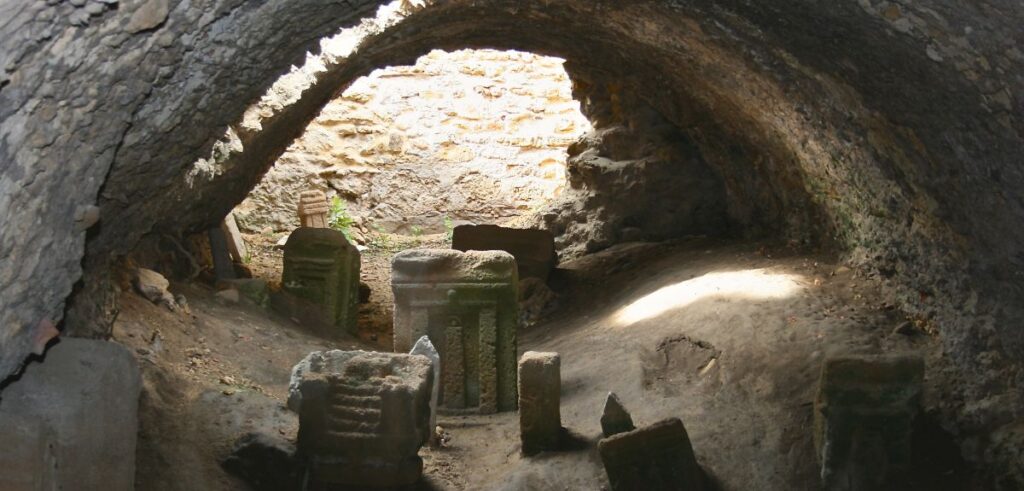Carthaginians sacrificed their own children, archaeologists say
A collaborative paper by academics from institutions across the globe, including Oxford University, suggests that Carthaginian parents ritually sacrificed young children as an offering to the gods.
The paper argues that well-meaning attempts to interpret the ‘tophets‘ – ancient infant burial grounds – simply as child cemeteries are misguided.
And the practice of child sacrifice could even hold the key to why the civilisation was founded in the first place.

The research pulls together literary, epigraphical, archaeological and historical evidence and confirms the Greek and Roman account of events that held sway until the 1970s when scholars began to argue that the theory was simply anti-Carthaginian propaganda.
The paper is published in the journal Antiquity.
Dr Josephine Quinn of Oxford University’s Faculty of Classics, and author of the paper, said: ‘It’s becoming increasingly clear that the stories about Carthaginian child sacrifice are true. This is something the Romans and Greeks said the Carthaginians did and it was part of the popular history of Carthage in the 18th and 19th centuries.
‘But in the 20th century, people increasingly took the view that this was racist propaganda on the part of the Greeks and Romans against their political enemy and that Carthage should be saved from this terrible slander.
‘What we are saying now is that the archaeological, literary, and documentary evidence for child sacrifice is overwhelming and that instead of dismissing it out of hand, we should try to understand it.’
The city-state of ancient Carthage was a Phoenician colony located in what is now Tunisia. It operated from around 800BC until 146BC when it was destroyed by the Romans.
Children – both male and female, and mostly a few weeks old – were sacrificed by the Carthaginians at locations known as tophets. The practice was also carried out by their neighbours at other Phoenician colonies in Sicily, Sardinia and Malta. Dedications from the children’s parents to the gods are inscribed on slabs of stone above their cremated remains, ending with the explanation that the god or gods concerned had ‘heard my voice and blessed me.
Dr Quinn said: ‘People have tried to argue that these archaeological sites are cemeteries for children who were stillborn or died young, but quite apart from the fact that a weak, sick or dead child would be a pretty poor offering to a god, and that animal remains are found in the same sites treated in exactly the same way, it’s hard to imagine how the death of a child could count as the answer to a prayer. It’s very difficult for us to recapture people’s motivations for carrying out this practice or why parents would agree to it, but it’s worth trying.
‘Perhaps it was out of profound religious piety, or a sense that the good the sacrifice could bring the family or community as a whole outweighed the life of the child. We have to remember the high level of mortality among children – it would have been sensible for parents not to get too attached to a child that might well not make its first birthday.’
Dr Quinn added: ‘We think of it as a slander because we view it in our own terms. But people looked at it differently 2,500 years ago.
‘Indeed, contemporary Greek and Roman writers tended to describe the practice as more of an eccentricity or historical oddity – they’re not actually very critical.
‘We should not imagine that ancient people thought like us and were horrified by the same things.’
The backlash against the notion of Carthaginian child sacrifice began in the second half of the 20th century and was led by scholars from Tunisia and Italy, the very countries in which tophets have been found.
Dr Quinn added: ‘Carthage was far bigger than Athens and for many centuries much more important than Rome, but it is something of a forgotten city today.
‘If we accept that child sacrifice happened on some scale, it begins to explain why the colony was founded in the first place.
‘Perhaps the reason the people who established Carthage and its neighbours left their original home of Phoenicia – modern-day Lebanon – was because others there disapproved of their unusual religious practice.
‘Child abandonment was common in the ancient world, and human sacrifice is found in many historical societies, but child sacrifice is relatively uncommon. Perhaps the future Carthaginians were like the Pilgrim Fathers leaving from Plymouth – they were so fervent in their devotion to the gods that they weren’t welcome at home anymore.
‘Dismissing the idea of child sacrifice stops us from seeing the bigger picture.’





